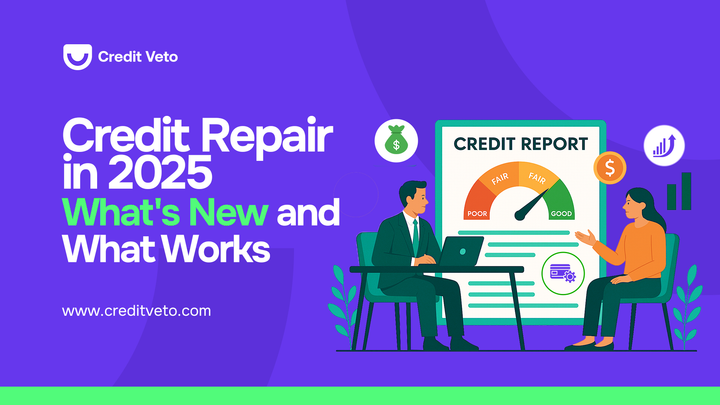Charge-Off vs. Collections: What’s the Difference and How to Remove Them from Your Credit Report
A charge-off and a collection both indicate serious debt issues, but they affect your credit report in different ways. In this guide, we break down the key differences.

A charge-off and a collection both indicate serious debt issues, but they affect your credit report in different ways. While a charge-off means a creditor has written off your unpaid debt as a loss, a collection occurs when that debt is transferred to a third-party agency for recovery.
Both charge-offs and collections can significantly lower your credit score, making it difficult to qualify for loans, credit cards, or even favorable interest rates. However, it is possible to remove charge-offs and collections from your credit report with the right strategies.
In this guide, we’ll break down the key differences between charge-offs and collections, their impact on your credit score, and the steps you can take to remove them.
What Is a Charge-Off?
A charge-off happens when a creditor gives up on collecting a debt and marks it as a loss on their financial records. This typically occurs after 180 days (or six months) of missed payments. However, the debt itself doesn’t disappear—you still owe the money.
How a Charge-Off Affects Your Credit Score
- A charge-off is one of the most damaging marks on your credit report, staying for up to seven years.
- It can cause your credit score to drop by 100 points or more.
- A charge-off signals to lenders that you are a high-risk borrower, making it harder to qualify for new credit.
- Even if you pay off the charged-off debt, the status remains unless you negotiate its removal.
Common Reasons for Charge-Offs
- Consistently missing credit card or loan payments
- Financial hardship, such as job loss or medical emergencies
- Ignoring creditor communication and failing to set up a repayment plan
What Are Collections?
A collection occurs when a charged-off debt is sold to a third-party debt collection agency. The collection agency then attempts to recover the amount owed.
How Collections Affect Your Credit Score
- A collection account can further lower your credit score, even if the original charge-off is already listed.
- It remains on your credit report for seven years, even if you pay it off.
- Having a collection account makes lenders hesitant to extend credit to you.
Types of Debt That Go to Collections
- Credit Card Debt – Unpaid balances are often sent to collections after charge-offs.
- Medical Bills – Hospitals and healthcare providers frequently turn unpaid bills over to collection agencies.
- Auto Loans – If you default on a car loan, the lender may send it to collections after repossession.
- Personal Loans – Unpaid loans from banks, credit unions, or online lenders often end up in collections.
Charge-Off vs. Collection: Key Differences
How to Remove Charge-Offs from Your Credit Report
Removing charge-offs from your credit report can be made easier with the following steps.
1. Verify the Charge-Off
Before taking any action, request a free credit report from Experian, Equifax, or TransUnion to confirm:
- The charge-off is accurate (amount, dates, creditor name).
- The debt belongs to you and is not fraudulent.
- The charge-off is not older than seven years (after which it should be removed automatically).
2. Negotiate a Pay-for-Delete Agreement
Some creditors may agree to remove the charge-off in exchange for payment. While not all lenders accept pay-for-delete requests, it’s worth negotiating:
- Contact the original creditor and ask if they will remove the charge-off if you pay in full or settle for a lower amount.
- Get the agreement in writing before making any payments.
- If they refuse, consider asking them to mark it as “Paid” or “Settled” instead of “Charge-Off.”
3. Dispute Inaccuracies
If the charge-off includes errors, such as the wrong amount, incorrect dates, or duplicated accounts, you can file a dispute with the credit bureaus.
- Submit a dispute online or via mail though Credit Veto with evidence of the mistake.
- The credit bureau must investigate and respond within 30 days.
4. Request a Goodwill Deletion
If the charge-off is legitimate but you have a good payment history, you can send a goodwill letter to the creditor.
- Explain why you missed payments (e.g., job loss, medical emergency).
- Request that they remove the charge-off as a goodwill gesture.
How to Remove Collections from Your Credit Report
Follow these steps to remove collections from your credit report without stress.
1. Check the Collection Account for Errors
Like charge-offs, collection accounts can sometimes contain inaccurate information:
- The debt is older than seven years and should be removed.
- The collection agency is reporting an incorrect balance.
- The debt does not belong to you.
2. Negotiate a Pay-for-Delete Agreement
Some collection agencies will remove the account if you settle the debt.
- Contact the collection agency and negotiate payment terms.
- Request a pay-for-delete letter stating that they will remove the account once paid.
- Make sure to get everything in writing before making payments.
3. Settle the Debt for Less Than You Owe
If you cannot afford to pay the full amount, ask the collection agency if they accept a settlement.
- Many agencies will accept a lower payment if you negotiate.
- Keep in mind that settled accounts may still impact your score, but they look better than unpaid collections.
4. Dispute the Collection with Credit Bureaus
If the collection agency fails to verify the debt within 30 days of a dispute, the credit bureau must remove it.
- File a dispute with Experian, Equifax, or TransUnion.
- Provide supporting documents (e.g., proof of payment, incorrect details).
How Long Do Charge-Offs and Collections Stay on Your Credit Report?
Rebuilding Your Credit After Charge-Offs and Collections
Removing charge-offs and collections from your credit report can take time, but it is possible with the right approach. Here’s how to recover financially:
- Make all future payments on time to rebuild trust with lenders.
- Keep credit utilization low by paying down existing balances.
- Monitor your credit regularly to spot inaccuracies early.
- Use secured credit cards or credit-building loans to establish positive credit history.
Don’t Let Charge-Offs and Collections Hold You Back
At Credit Veto, we specialize in removing negative marks from your credit report. We don't not only dispute inaccurate charge-offs, negotiate with creditors, but also help you rebuild your credit faster.
Take control of your credit today—sign up for our Free 90-day Credit Repair Starter Pack and start your journey to financial freedom!




Comments ()